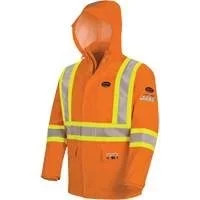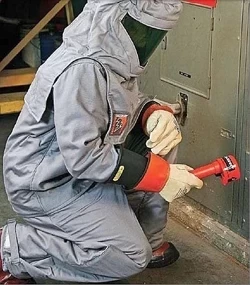How Proper PPE Promotes Safety Culture

In the realm of electrical safety, Personal Protective Equipment (PPE) is often viewed through the lens of compliance. However, the role of PPE extends beyond meeting regulatory requirements; it is a fundamental element in fostering a strong safety culture within an organization.
Arc flash personal protective equipment (PPE) is a non-negotiable requirement in industries with electrical hazards. However, viewing PPE solely through the lens of regulatory obligation misses a key opportunity to cultivate a proactive safety culture where workers feel valued, protected, and empowered to prioritize their own well-being.
Visit Our Arc Flash Study Course
The Connection Between PPE and Mindset
- Investment in Safety = Investment in Workers: When organizations provide comfortable, well-fitting PPE without cutting corners, it sends a tangible message. Workers understand that the company prioritizes their safety, not just ticking off compliance boxes.
- Comfort Influences Compliance: Ill-fitting, restrictive, or excessively hot PPE is more likely to be worn incorrectly or avoided. Comfort directly contributes to consistent and proper use, which is vital for protection.
- PPE as a Tool, Not an Obstacle: When workers see PPE as enabling them to perform their jobs safely, rather than fighting against it, their attitude towards safety procedures shifts positively.
- Worker Participation: Involving workers in PPE selection processes, considering feedback on fit and comfort, builds trust and a sense of ownership in safety practices.
How a Safety-Focused Culture Benefits Organizations
- Improved Morale: Workers who feel the company truly cares about their safety are more likely to have a positive attitude towards their work and the organization.
- Reduced Incidents: A heightened focus on safety, driven partially by the visible commitment to PPE, translates into the adoption of safer work practices throughout the organization.
- Building a Reputation for Safety: Workers in a strong safety culture are more likely to speak up about potential hazards or suggest improvements. This proactive approach helps avert incidents.
- Potential for Insurance Savings: Demonstrating effective safety programs, including attention to PPE, can sometimes impact insurance premiums positively.
The Impact of PPE on Safety Perception
Worker Empowerment through Adequate Protection
Providing workers with comfortable and well-fitted PPE not only protects them from physical harm but also empowers them by demonstrating that their safety is a priority. When workers feel safe, they are more likely to engage proactively in safety practices, contribute to safety discussions, and take responsibility for their safety and that of their colleagues.
Demonstrating Commitment to Safety
Investment in high-quality PPE sends a clear message to employees that the organization values their well-being and is committed to creating a safe working environment. This commitment can enhance trust and morale, leading to a more positive workplace atmosphere and reinforcing the importance of safety in the organizational culture.
The Role of PPE in Enhancing Safety Culture
Building Trust and Compliance
When workers trust that their safety gear will protect them effectively, they are more likely to comply with safety protocols and use the equipment as intended. This trust is built on consistent experiences of PPE effectiveness and comfort, contributing to a cycle of positive reinforcement between safety compliance and culture.
Encouraging Active Participation
Proper PPE can encourage active participation in safety programs, including training sessions, safety audits, and risk assessments. Workers who feel well-protected are more likely to engage in these activities, contributing to a collective effort to maintain and improve safety standards.
Challenges and Considerations in PPE Implementation
Balancing Protection with Comfort
One of the main challenges in PPE implementation is finding equipment that provides adequate protection while remaining comfortable to wear, especially over long periods or in varying environmental conditions. Advances in PPE technology have led to the development of materials and designs that better balance these needs.
Continuous Improvement and Feedback
For PPE to effectively contribute to a safety culture, it must evolve based on worker feedback and technological advancements. A process of continuous improvement, where feedback from PPE users is actively sought and incorporated into future PPE selections, is essential for ensuring the equipment remains effective and acceptable to workers.
Technologies and Trends Influencing PPE Development
Innovative Materials and Smart PPE
The latest trends in PPE focus on the use of innovative materials that offer superior protection without compromising comfort. Additionally, the integration of smart technologies in PPE, such as sensors and connectivity, can enhance safety by providing real-time data on hazard exposure and PPE status.
Customization and Ergonomics
Customized and ergonomically designed PPE can significantly improve user satisfaction and safety outcomes. By tailoring PPE to fit the specific needs and preferences of individual workers, organizations can ensure higher levels of comfort and protection, leading to better compliance and safety engagement.
Conclusion
Proper Personal Protective Equipment is pivotal in promoting a strong safety culture beyond mere compliance. By investing in PPE that combines comfort with protection, organizations can empower their workers, demonstrate a genuine commitment to safety, and cultivate an environment where safety is a shared value and priority. This holistic approach to PPE not only protects individuals from immediate hazards but also contributes to the long-term well-being and performance of the entire workforce.






